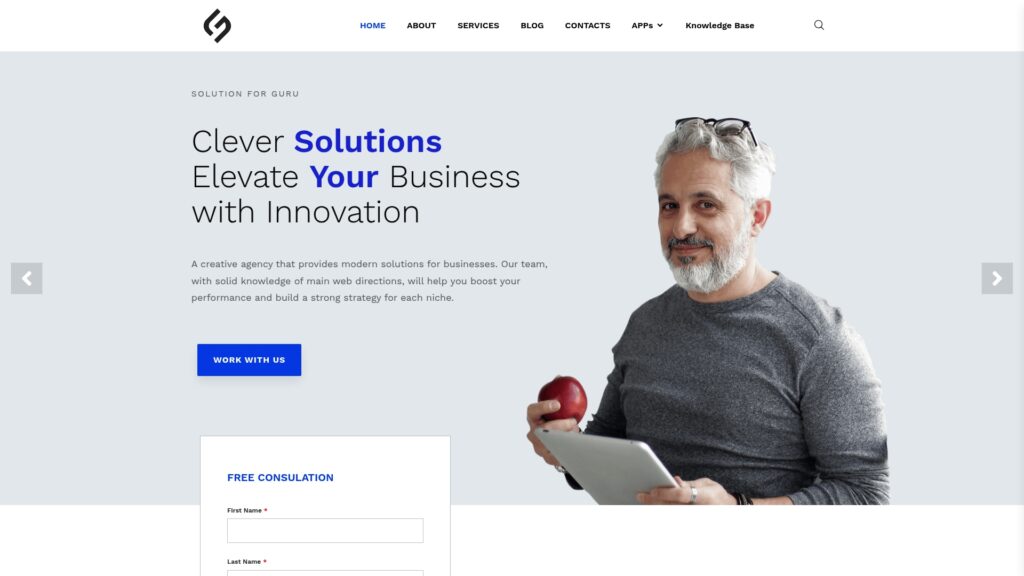The Future of ITSM: AI, Automation, and Predictive Analytics

The landscape of IT Service Management is undergoing a profound transformation. As organizations grapple with increasingly complex IT environments and rising user expectations, traditional ITSM approaches are being revolutionized by artificial intelligence, automation, and predictive analytics. These technologies are not merely enhancing existing processes – they’re fundamentally reshaping how IT teams deliver services, resolve issues, and create value for their organizations. This comprehensive guide explores how AI, automation, and predictive analytics are defining the future of ITSM and what it means for businesses worldwide.
Table of Contents
- Quick Summary
- What is ITSM and Why Does It Matter in Today’s Digital Landscape?
- What Role Do Leading ITSM Platforms Play in This Transformation?
- How Is AI Revolutionizing Service Desk Operations?
- What Makes Automation Essential for Modern ITSM?
- How Does Predictive Analytics Prevent Problems Before They Occur?
- What Are the Key Benefits of Implementing AI-Driven ITSM?
- Summing up
- Frequently Asked Questions
Quick Summary
The future of IT Service Management is being shaped by three powerful forces: artificial intelligence, automation, and predictive analytics. AI-powered chatbots and virtual agents are transforming service desks by providing instant, 24/7 support and handling routine inquiries without human intervention. Meanwhile, automation is streamlining workflows, eliminating manual tasks, and ensuring consistency across IT operations. Predictive analytics is enabling IT teams to shift from reactive firefighting to proactive problem prevention, identifying potential issues before they impact users.
Leading ITSM platforms like Freshservice, ManageEngine, and Zendesk are integrating these technologies into their solutions, offering organizations powerful tools to enhance service delivery, reduce costs, and improve user satisfaction. However, successful implementation requires careful planning, change management, and a clear understanding of both opportunities and challenges. Organizations that embrace these technologies strategically, supported by expert partners like Solution for Guru, will gain significant competitive advantages in efficiency, service quality, and innovation.
What is ITSM and Why Does It Matter in Today’s Digital Landscape?
IT Service Management (ITSM) represents a comprehensive approach to designing, delivering, managing, and improving the way information technology is used within an organization. Furthermore, it encompasses the policies, processes, and procedures that govern the entire lifecycle of IT services—from initial planning and design through deployment, operation, and continuous improvement. At its core, ITSM aligns IT services with business objectives, ensuring that technology investments deliver tangible value to the organization.
In today’s digital-first world, ITSM has evolved from a back-office function to a strategic business enabler. Organizations rely on IT systems for virtually every aspect of their operations, making effective ITSM critical to business continuity, productivity, and competitiveness. Consequently, modern ITSM frameworks like ITIL (Information Technology Infrastructure Library) provide structured methodologies for managing IT services, emphasizing customer focus, value creation, and continuous improvement.
The Evolution of ITSM
Traditional ITSM focused primarily on incident management, problem resolution, and maintaining service levels. However, the digital transformation has dramatically expanded the scope and complexity of IT operations. Today’s IT teams must manage cloud services, mobile devices, distributed workforces, cybersecurity threats, and rapidly changing business requirements. This complexity demands more sophisticated approaches that leverage advanced technologies.
Understanding AI in ITSM
Artificial Intelligence in ITSM refers to the application of machine learning algorithms, natural language processing, and cognitive computing to automate and enhance IT service delivery. AI systems can analyze vast amounts of data, identify patterns, learn from past incidents, and make intelligent decisions with minimal human intervention. Moreover, AI-powered tools can understand context, predict outcomes, and continuously improve their performance through machine learning.
In the ITSM context, AI manifests in various forms: intelligent chatbots that interact with users in natural language, recommendation engines that suggest solutions based on historical data, sentiment analysis tools that gauge user satisfaction, and anomaly detection systems that identify unusual patterns indicating potential problems. These AI capabilities transform how IT teams interact with users, diagnose issues, and deliver services.
Automation: The Engine of Efficiency
Automation in ITSM involves using technology to perform tasks, workflows, and processes with minimal or no human intervention. Unlike simple scripting, modern ITSM automation incorporates business logic, conditional workflows, and integration with multiple systems to orchestrate complex processes end-to-end. Automation eliminates repetitive manual tasks, reduces human error, ensures consistency, and frees IT staff to focus on strategic initiatives.
Key automation areas include ticket routing, approval workflows, software deployment, access provisioning, compliance checking, and reporting. Additionally, automation can trigger preventive maintenance, execute remediation actions, and update documentation automatically. The result is faster service delivery, reduced operational costs, and improved accuracy across IT operations.
Predictive Analytics: Foresight for IT Operations
Predictive analytics uses statistical algorithms, machine learning techniques, and historical data to forecast future events and trends. In ITSM, predictive analytics analyzes patterns in incidents, performance metrics, user behavior, and system logs to anticipate problems before they occur. This proactive approach represents a fundamental shift from reactive “break-fix” models to preventive maintenance and risk mitigation.
Predictive analytics can forecast service outages, identify systems at risk of failure, predict ticket volumes to optimize staffing, and recommend preventive actions. By leveraging data from multiple sources—including monitoring tools, ticketing systems, configuration databases, and external feeds—predictive models provide IT teams with actionable insights that prevent disruptions and optimize resource allocation.
How These Technologies Interconnect
AI, automation, and predictive analytics are not isolated technologies but interconnected capabilities that amplify each other’s impact. Predictive analytics identifies what might happen, AI determines the best course of action, and automation executes that action rapidly and consistently. Together, they create intelligent, self-improving ITSM systems that deliver superior service quality with greater efficiency.
For instance, predictive analytics might identify a server likely to fail within 48 hours. AI algorithms then determine the optimal remediation strategy based on business impact, resource availability, and historical success rates. Finally, automation executes the remediation—perhaps migrating workloads to another server and scheduling maintenance—without requiring manual intervention. This seamless integration transforms ITSM from reactive support to proactive service excellence.
What Role Do Leading ITSM Platforms Play in This Transformation?
The adoption of AI, automation, and predictive analytics in ITSM is being driven largely by leading software platforms that have integrated these capabilities into their solutions. Platforms like Freshservice, ManageEngine, and Zendesk are democratizing access to advanced technologies, enabling organizations of all sizes to implement intelligent ITSM without building custom solutions from scratch.
Freshservice: AI-Powered Service Management

Freshservice, developed by Freshworks, has emerged as a leading cloud-based ITSM solution that emphasizes user experience and AI-driven automation. The platform incorporates Freddy AI, an artificial intelligence engine that powers intelligent features across the service management lifecycle. Freddy AI analyzes historical ticket data to suggest solutions, predict ticket fields, and recommend knowledge base articles to both agents and end-users.
Furthermore, Freshservice’s automation capabilities enable organizations to create workflow automations that trigger based on specific conditions, time-based rules, or external events. These workflows can automatically assign tickets, escalate issues, send notifications, and update asset information without manual intervention. The platform also includes predictive analytics features that forecast ticket trends, helping IT teams anticipate demand and allocate resources proactively.
Freshservice’s strength lies in its intuitive interface combined with powerful AI capabilities that reduce resolution times and improve first-contact resolution rates. The platform’s chatbot functionality enables users to request services, check ticket status, and access knowledge articles through natural language conversations. Additionally, Freshservice integrates with numerous third-party tools, creating a unified ecosystem that enhances its automation and analytics capabilities.
ManageEngine: Comprehensive Enterprise ITSM

ManageEngine ServiceDesk Plus represents a comprehensive ITSM solution designed for enterprises requiring robust functionality and extensive customization. The platform incorporates AI-powered virtual assistants that handle routine service requests, provide instant responses to common queries, and guide users through self-service options. ManageEngine’s AI capabilities extend to intelligent ticket categorization, priority assignment, and technician suggestion based on skills and workload.
Moreover, ManageEngine offers advanced automation through its workflow engine, which supports complex, multi-stage processes with conditional logic, parallel approvals, and integration with external systems. The platform’s predictive analytics capabilities include trend analysis, performance forecasting, and risk assessment tools that help IT managers make data-driven decisions. ManageEngine also provides extensive reporting and dashboard customization, enabling organizations to monitor key performance indicators in real-time.
The platform’s strength lies in its depth of functionality and flexibility, making it suitable for organizations with complex ITSM requirements. ManageEngine supports ITIL best practices while allowing customization to match specific organizational processes. Its asset management, project management, and change management modules integrate seamlessly, creating a unified platform for all IT service delivery activities. The inclusion of AI and automation features helps organizations scale their ITSM operations without proportionally increasing staff.
Zendesk: Omnichannel Support Excellence

Zendesk has established itself as a leader in customer service and support, with its ITSM capabilities built on the same robust platform. Zendesk’s AI-powered Answer Bot provides instant responses to employee inquiries by analyzing support tickets and suggesting relevant knowledge base articles. The platform’s intelligent triage automatically routes tickets to the appropriate team or agent based on content analysis, skills matching, and availability.
Additionally, Zendesk offers powerful workflow automation through its business rules engine and triggers, which can execute complex actions based on ticket properties, time conditions, or external events. The platform’s analytics capabilities include predictive features that forecast ticket volumes, identify trending issues, and measure customer satisfaction. Zendesk’s omnichannel approach enables employees to access support through email, chat, phone, self-service portals, or mobile apps, with AI ensuring consistent experiences across all channels.
Zendesk’s advantage lies in its exceptional user experience and proven track record in customer support, which translates effectively to internal IT service management. The platform’s marketplace offers hundreds of integrations and apps that extend its functionality, while its API enables custom integrations with enterprise systems. For organizations prioritizing user satisfaction and seamless experiences, Zendesk provides a compelling ITSM solution enhanced by sophisticated AI and automation capabilities.
Platform Comparison: AI, Automation, and Predictive Analytics Capabilities
To help organizations evaluate which ITSM platform best aligns with their AI-driven transformation goals, the following comparison table highlights key capabilities of Freshservice, ManageEngine, and Zendesk specifically related to artificial intelligence, automation, and predictive analytics:
How Is AI Revolutionizing Service Desk Operations?

Artificial intelligence is fundamentally transforming service desk operations by augmenting human capabilities, automating routine tasks, and delivering insights that improve service quality. The impact of AI on service desks extends across multiple dimensions, from first-line support to knowledge management and continuous improvement.
Intelligent Virtual Agents and Chatbots
AI-powered virtual agents represent one of the most visible applications of artificial intelligence in ITSM. These conversational interfaces use natural language processing to understand user inquiries, provide instant responses, and resolve common issues without human intervention. Unlike traditional rule-based chatbots, AI virtual agents learn from interactions, understand context, and handle increasingly complex queries over time.
Virtual agents can assist users with password resets, access requests, software installations, and status updates—tasks that collectively consume significant service desk resources. By handling these routine interactions, virtual agents reduce ticket volumes, decrease resolution times, and provide 24/7 availability. Users benefit from instant responses regardless of time zone or business hours, while IT staff can focus on complex problems requiring human expertise and judgment.
Moreover, advanced virtual agents integrate with backend systems to execute actions, not just provide information. They can reset passwords, provision access, create service requests, and update tickets directly within the conversation. This end-to-end automation delivers complete resolution without requiring users to switch between multiple interfaces or wait for agent availability.
Intelligent Ticket Routing and Assignment
AI algorithms analyze ticket content, metadata, and historical patterns to automatically route requests to the most appropriate team or individual. This intelligent routing considers factors such as technical expertise, current workload, past performance, and availability. Consequently, tickets reach the right resolver faster, reducing reassignments and improving first-contact resolution rates.
Machine learning models continuously improve routing accuracy by learning from feedback and outcomes. When a ticket is reassigned or escalated, the system learns which attributes indicate specific expertise requirements. Over time, this creates increasingly accurate routing that matches the complexity and nature of each request with the optimal resolver, significantly reducing mean time to resolution.
Automated Ticket Categorization and Prioritization
AI-powered classification systems analyze ticket descriptions, attachments, and metadata to automatically categorize incidents and service requests. Natural language processing identifies key concepts, intent, and urgency indicators, assigning appropriate categories, subcategories, and priority levels. This automation ensures consistency, eliminates manual categorization effort, and enables more accurate reporting and trend analysis.
Furthermore, AI systems can detect critical issues that might be incorrectly prioritized based on user input alone. By analyzing ticket content against known incident patterns, system alerts, and configuration data, AI can identify high-impact issues and automatically escalate them, preventing minor classifications of major problems that could cause significant business disruption.
Predictive Recommendations and Knowledge Suggestions
AI recommendation engines analyze ticket content and compare it against historical resolutions, knowledge base articles, and solution databases to suggest relevant information to both users and agents. For users, this appears as suggested articles in self-service portals that might resolve their issue without creating a ticket. For agents, recommendations appear within the ticket interface, providing potential solutions based on how similar issues were previously resolved.
These recommendations become more accurate over time as machine learning algorithms learn which suggestions lead to successful resolutions. The system considers contextual factors such as user location, device type, software versions, and organizational role when generating recommendations, ensuring relevance and appropriateness. This capability significantly reduces research time and improves resolution consistency across the service desk team.
Sentiment Analysis and Experience Monitoring
AI-powered sentiment analysis evaluates the tone and emotion in user communications, identifying frustration, urgency, or satisfaction. This analysis can trigger automatic escalations for dissatisfied users, alert supervisors to problematic interactions, and provide insights into overall service quality. Understanding user sentiment enables proactive intervention before minor dissatisfaction escalates into major complaints or negative perceptions of IT services.
Additionally, sentiment analysis provides valuable data for continuous improvement initiatives. By correlating sentiment with specific issue types, agents, or processes, organizations can identify areas requiring attention and measure the impact of improvement efforts on user experience. This data-driven approach to experience management ensures that service improvements align with actual user needs and perceptions.
What Makes Automation Essential for Modern ITSM?
Automation has evolved from a convenience to a necessity in modern ITSM environments. The scale and complexity of today’s IT infrastructure, combined with increasing service demands and constrained resources, make comprehensive automation essential for maintaining service quality while controlling costs. Automation delivers consistency, speed, and reliability that manual processes simply cannot match at enterprise scale.
Workflow Automation and Orchestration
Modern ITSM platforms like Freshservice, ManageEngine, and Zendesk provide sophisticated workflow engines that automate multi-step processes across systems and teams. These workflows can execute conditional logic, parallel processing, approval chains, and integration with external systems to orchestrate complex business processes end-to-end. For instance, a new employee onboarding workflow might automatically provision accounts, assign hardware, schedule orientation sessions, and grant appropriate access – all triggered by a single HR system event.
Workflow automation eliminates manual handoffs that introduce delays and errors, ensuring that processes execute consistently according to defined standards. Moreover, automated workflows provide complete audit trails and real-time visibility into process status, enabling better oversight and continuous optimization. Organizations can model, test, and refine workflows without impacting production systems, then deploy improvements that immediately benefit all users.
Self-Service Portals and Service Catalogs
Automation enables comprehensive self-service capabilities through intelligent portals that present relevant services, guide users through request processes, and execute fulfillment automatically. Service catalogs organize available IT services with clear descriptions, request forms, and automated approval workflows. Users can request software installations, hardware upgrades, access permissions, or information without submitting tickets that require manual processing.
The automation behind self-service extends beyond simple form submission. Backend processes provision services, update configuration databases, send notifications, and close requests automatically when fulfillment completes. This end-to-end automation delivers instant or rapid fulfillment for standard requests while freeing IT staff from repetitive manual tasks. Platforms like Freshservice and Zendesk excel at creating intuitive self-service experiences that encourage adoption and reduce service desk workload.
Automated Discovery and Asset Management
Automation plays a critical role in maintaining accurate configuration management databases (CMDBs) and asset inventories. Automated discovery tools continuously scan networks, identify devices and applications, gather configuration data, and update the CMDB without manual data entry. This automation ensures that asset information remains current, supporting accurate impact analysis, license management, and security compliance.
ManageEngine ServiceDesk Plus, for example, includes comprehensive asset discovery and management capabilities that automatically detect hardware, software, and cloud assets. Automated agents collect detailed configuration data, monitor changes, and alert IT teams to unauthorized modifications or compliance violations. This continuous, automated monitoring provides visibility that would be impossible to maintain manually across large, dynamic IT environments.
Automated Remediation and Problem Resolution
Advanced automation extends beyond workflow orchestration to include automated remediation of common issues. Scripts and automation tools can respond to monitoring alerts by executing diagnostic procedures, attempting standard fixes, and only escalating to human agents when automatic resolution fails. This approach dramatically reduces incident resolution times and prevents minor issues from impacting users.
For instance, automation might detect high memory utilization on a server, attempt to free resources through standard procedures, restart problematic services if necessary, and document all actions taken. If automatic remediation succeeds, the incident never requires human intervention. If it fails, the agent receives a detailed history of attempted resolutions, accelerating manual troubleshooting. Platforms like ManageEngine support extensive automation capabilities that enable organizations to build sophisticated remediation playbooks.
Automated Compliance and Audit Management
Automation helps organizations maintain compliance with regulatory requirements and internal policies by continuously monitoring configurations, access controls, and change processes. Automated compliance checks can verify that systems meet security standards, identify deviations, and trigger remediation workflows. Similarly, automated audit trails document all changes, access requests, and incident resolutions, providing comprehensive evidence for compliance audits.
This continuous, automated compliance monitoring reduces audit preparation effort and identifies compliance risks before they result in violations. Organizations can define compliance policies once, then rely on automation to enforce them consistently across all systems and users. The result is stronger security posture, reduced compliance risk, and lower audit costs.
How Does Predictive Analytics Prevent Problems Before They Occur?

Predictive analytics represents a paradigm shift in ITSM from reactive problem-solving to proactive problem prevention. By analyzing historical data, identifying patterns, and forecasting future states, predictive analytics enables IT teams to address issues before they impact users, optimize resources, and make data-driven decisions that improve service quality and reduce costs.
Predictive Maintenance and Failure Prevention
Predictive analytics analyzes system performance metrics, historical failure patterns, and configuration data to identify devices or components likely to fail. This capability enables predictive maintenance strategies where IT teams proactively replace or repair components before failure occurs, preventing unplanned outages and minimizing business disruption. Machine learning models identify subtle indicators that precede failures, providing advance warning that allows scheduled, controlled interventions.
For example, predictive models might analyze disk performance metrics and identify drives exhibiting characteristics associated with imminent failure. IT teams can then schedule data migration and drive replacement during maintenance windows, preventing data loss and unplanned downtime. Platforms like Freshservice and ManageEngine increasingly incorporate predictive capabilities that alert IT teams to potential failures, transforming maintenance from reactive to proactive.
Capacity Planning and Resource Optimization
Predictive analytics forecasts resource utilization trends, enabling proactive capacity planning that prevents performance degradation and ensures adequate resources for business needs. By analyzing historical usage patterns, growth trends, and business forecasts, predictive models estimate future capacity requirements for compute, storage, network, and other resources. This foresight enables organizations to procure and deploy resources before capacity constraints impact performance.
Additionally, predictive analytics optimizes resource allocation by identifying underutilized assets that could be repurposed or decommissioned. This optimization reduces infrastructure costs while ensuring that critical systems have adequate resources. The combination of usage forecasting and optimization recommendations helps IT leaders make informed investment decisions that balance cost control with service quality.
Incident Volume Forecasting and Staffing Optimization
Predictive models analyze historical ticket volumes, seasonal patterns, and organizational events to forecast future service desk workload. This forecasting enables optimal staffing decisions, ensuring adequate coverage during high-demand periods while avoiding overstaffing during quieter times. Accurate volume predictions improve service levels, reduce wait times, and optimize labor costs.
Furthermore, predictive analytics can identify specific incident types likely to increase based on factors such as software releases, organizational changes, or external events. This granular forecasting enables targeted preparations such as additional training, pre-positioned solutions, or proactive communications that prevent incident surges. Zendesk‘s analytics capabilities, for instance, help organizations forecast support demand and optimize agent scheduling accordingly.
Problem Identification and Root Cause Analysis
Predictive analytics identifies emerging problems by detecting patterns across multiple incidents that indicate common underlying causes. Rather than treating each incident as isolated, advanced analytics correlate incidents based on symptoms, affected systems, timeframes, and other attributes to identify problems requiring root cause analysis. This proactive problem identification prevents recurring incidents and reduces overall incident volume.
Machine learning algorithms can also accelerate root cause analysis by suggesting probable causes based on incident characteristics and historical problem resolutions. These recommendations help problem managers focus investigations on likely causes, reducing the time required to identify and resolve underlying issues. The result is faster problem resolution and fewer recurring incidents affecting users.
Trend Analysis and Service Improvement
Predictive analytics provides insights into service trends, quality indicators, and emerging issues that inform continuous improvement initiatives. By analyzing key performance indicators over time, organizations can identify degrading trends before they breach service levels, assess the effectiveness of improvement initiatives, and prioritize efforts based on potential impact. This data-driven approach to service improvement ensures that resources focus on initiatives delivering maximum value.
Additionally, trend analysis can reveal patterns related to specific service categories, user groups, or technologies that warrant strategic attention. For instance, consistently increasing incident volumes for a particular application might indicate the need for replacement, upgrades, or enhanced user training. ManageEngine‘s reporting and analytics capabilities provide comprehensive trend analysis tools that support data-driven decision-making.
What Are the Key Benefits of Implementing AI-Driven ITSM?
Organizations implementing AI, automation, and predictive analytics in ITSM realize substantial benefits across multiple dimensions, from operational efficiency to strategic value creation. These benefits compound over time as systems learn, processes mature, and organizations develop capabilities to leverage advanced technologies effectively.
Enhanced Service Quality and User Satisfaction
AI-driven ITSM delivers faster resolution times, improved first-contact resolution rates, and 24/7 availability—all factors that significantly enhance user satisfaction. Virtual agents provide instant responses to common queries, automation eliminates delays in standard processes, and predictive analytics prevents problems before users experience disruptions. Consequently, users perceive IT services as responsive, reliable, and aligned with their needs.
Moreover, consistent service delivery across all interaction channels creates uniform, positive experiences regardless of how users engage with IT services. Platforms like Freshservice and Zendesk excel at delivering seamless omnichannel experiences that meet modern user expectations. Higher satisfaction translates to improved IT reputation, stronger business partnerships, and increased adoption of IT services and tools.
Operational Efficiency and Cost Reduction
Automation eliminates repetitive manual tasks, enabling IT teams to accomplish more with existing resources. Virtual agents handle routine inquiries, automated workflows process standard requests, and intelligent routing minimizes wasted effort. These efficiency gains reduce operational costs while improving service speed and consistency. Organizations typically realize 30-50% reductions in routine ticket handling time following comprehensive automation implementation.
Furthermore, predictive maintenance prevents costly unplanned outages and extends asset lifecycles through optimized maintenance strategies. Capacity planning ensures efficient resource utilization, avoiding both performance issues from inadequate capacity and waste from excessive provisioning. The cumulative cost savings from improved efficiency, problem prevention, and optimized resource allocation can be substantial, often justifying technology investments within 12-18 months.
Strategic Capacity and Innovation Focus
By automating routine tasks and enabling self-service, AI-driven ITSM frees IT staff to focus on strategic initiatives, innovation projects, and complex problems requiring human expertise. This shift from tactical firefighting to strategic value creation transforms IT organizations from cost centers to strategic business enablers. Teams can dedicate time to digital transformation initiatives, business process improvements, and technology innovations that drive competitive advantage.
Additionally, the insights provided by predictive analytics inform strategic decisions about technology investments, organizational structure, and service portfolio management. Data-driven strategies replace intuition-based approaches, improving decision quality and outcomes. Organizations partnering with Solution for Guru gain expert guidance in leveraging AI-driven ITSM for strategic transformation, not just operational improvement.
Scalability and Growth Support
AI and automation enable ITSM operations to scale efficiently as organizations grow. Unlike traditional approaches where service desk staff must increase proportionally with user populations, automated systems handle increased volumes with minimal incremental cost. Virtual agents serve thousands of users simultaneously, automated workflows process unlimited requests in parallel, and predictive analytics monitor expanding infrastructures without additional overhead.
This scalability is particularly valuable for rapidly growing organizations, those experiencing seasonal volume fluctuations, or companies expanding through acquisitions. ITSM platforms like ManageEngine and Freshservice support multi-tenant configurations, allowing organizations to serve multiple entities or business units from a single platform while maintaining appropriate separation and customization.
Improved Compliance and Risk Management
Automation ensures consistent application of policies, standards, and compliance requirements across all IT operations. Automated workflows enforce approval requirements, access controls, and change management processes without exception. Comprehensive audit trails document all activities, providing evidence for compliance audits and security investigations. Predictive analytics identifies compliance risks and security vulnerabilities before they result in violations or breaches.
These capabilities reduce compliance costs, minimize regulatory risk, and strengthen security posture—all critical concerns for modern organizations. The combination of prevention through prediction, consistent enforcement through automation, and comprehensive documentation through automated logging creates robust compliance and risk management frameworks that scale with organizational growth.
Summing up
The future of IT Service Management is being fundamentally reshaped by artificial intelligence, automation, and predictive analytics. These technologies are transforming ITSM from reactive support operations into proactive, strategic functions that prevent problems, optimize resources, and deliver exceptional user experiences. Organizations embracing these capabilities gain significant competitive advantages through improved efficiency, reduced costs, enhanced service quality, and strategic capacity for innovation.
Leading ITSM platforms like Freshservice provide intuitive, AI-powered solutions that make advanced capabilities accessible to organizations seeking to modernize service delivery. Freshservice’s Freddy AI, comprehensive automation, and user-friendly interface enable rapid implementation and strong user adoption. Similarly, ManageEngine offers enterprise-grade functionality with sophisticated AI, extensive customization, and deep ITIL alignment for organizations with complex requirements. Meanwhile, Zendesk delivers exceptional user experiences and omnichannel capabilities proven in customer service contexts and effectively applied to IT service management.
However, technology alone does not guarantee success. Organizations must approach AI-driven ITSM strategically, addressing data quality, integration requirements, change management, and skills development. Successful implementations follow phased approaches beginning with assessments, continuing through carefully planned rollouts, and including continuous optimization based on metrics and feedback. The challenges of implementation—including data integration, change resistance, and skills gaps – are manageable with proper planning and expert guidance.
The benefits of AI-driven ITSM extend beyond operational improvements to strategic transformation. IT teams freed from routine tasks can focus on innovation, digital transformation, and strategic business enablement. Predictive insights inform better decisions about investments, risks, and priorities. Enhanced service quality strengthens business relationships and IT reputation. Scalable operations support growth without proportional cost increases. These cumulative benefits justify investments and position IT organizations as strategic business partners rather than cost centers.
The future of ITSM is intelligent, automated, and predictive. Organizations that embrace this future strategically, supported by capable platforms and expert partners, will deliver superior IT services while positioning themselves for continued success in increasingly digital business environments. The transformation from reactive support to proactive service excellence is not merely possible—it is achievable today with the right combination of technology, strategy, and partnership.
Frequently Asked Questions
Implementation timelines vary significantly based on organizational size, complexity, platform choice, and scope of transformation. A focused pilot implementation leveraging platforms like Freshservice or Zendesk might be completed in 6-12 weeks, delivering quick wins with virtual agents, basic automation, and self-service capabilities. Comprehensive enterprise implementations using ManageEngine or other robust platforms typically require 6-12 months for full deployment across all ITSM processes.
Organizations should approach implementation in phases rather than attempting complete transformation simultaneously. Initial phases focusing on high-impact use cases—such as virtual agents for password resets or automated ticket routing—can deliver value within weeks while building momentum for subsequent phases. Each phase includes planning, configuration, testing, training, and refinement before proceeding to the next. This phased approach manages risks, enables learning, and demonstrates progressive value that maintains stakeholder support.
Organizations implementing AI, automation, and predictive analytics in ITSM typically realize substantial ROI through multiple value streams. Operational cost reductions of 30-50% are common for routine service desk activities as virtual agents handle increasing volumes without proportional staffing increases. Automation eliminates manual effort across workflows, incident management, and service fulfillment, freeing staff for higher-value activities. Organizations often report that automation saves 20-40 hours per week for typical IT teams. Actual ROI depends on factors including current ITSM maturity, quality of implementation, extent of adoption, and organizational characteristics. Organizations with mature processes and good data quality typically realize faster and larger returns. Platforms like Freshservice, ManageEngine, and Zendesk provide ROI calculators and case studies demonstrating achieved benefits across different industries and organization sizes. Solution for Guru helps organizations develop realistic ROI projections and implement strategies that maximize value realization.
Why Partner with Solution for Guru?
Implementing AI-driven ITSM represents a significant transformation that can fundamentally improve how your organization delivers IT services. However, realizing maximum value requires more than technology deployment—it demands strategic planning, technical expertise, change management capabilities, and ongoing optimization. Solution for Guru (https://www.solution4guru.com/) provides comprehensive services that ensure your ITSM transformation succeeds and delivers sustained value.

Transform your IT service management with confidence by partnering with Solution for Guru. Visit https://www.solution4guru.com/ to learn more about their services, explore case studies, and begin your journey toward AI-driven ITSM excellence with expert guidance and support.
Recommended:
- ITSM Change Management
- ITSM Integration: Streamlining IT Service Management for Modern Enterprises
- ITSM Problem Management
- What Are ITSM Ticketing Tools?
- ITSM Jobs: Your Guide to a Thriving Career in IT Service Management
- Why are ITSM Best Practices essential?
- What is an IT Management Service Provider?
- Comprehensive Guide to ITSM Tools: Features, Benefits, and Top Solutions
- What is IT Service Management (ITSM)?




